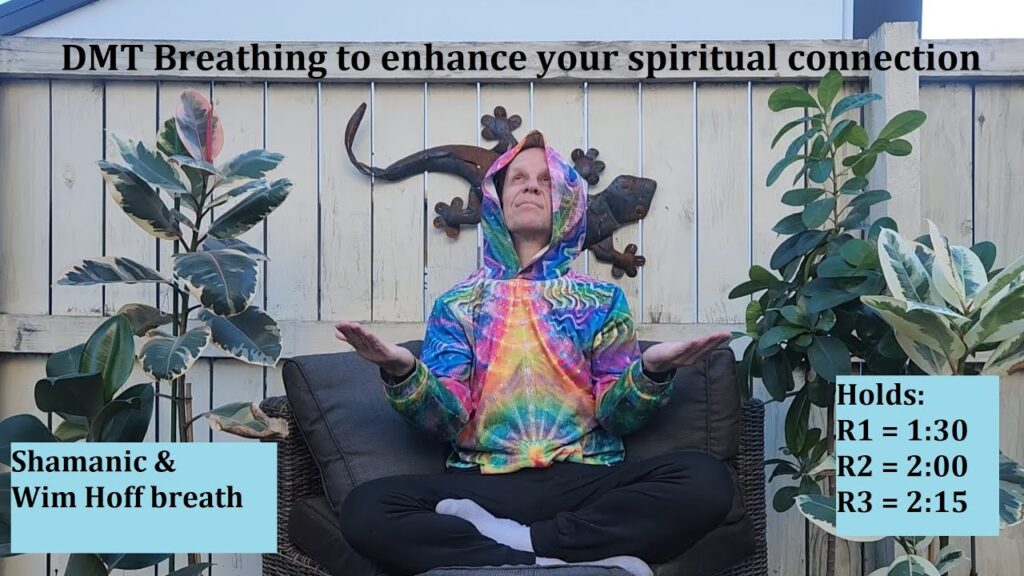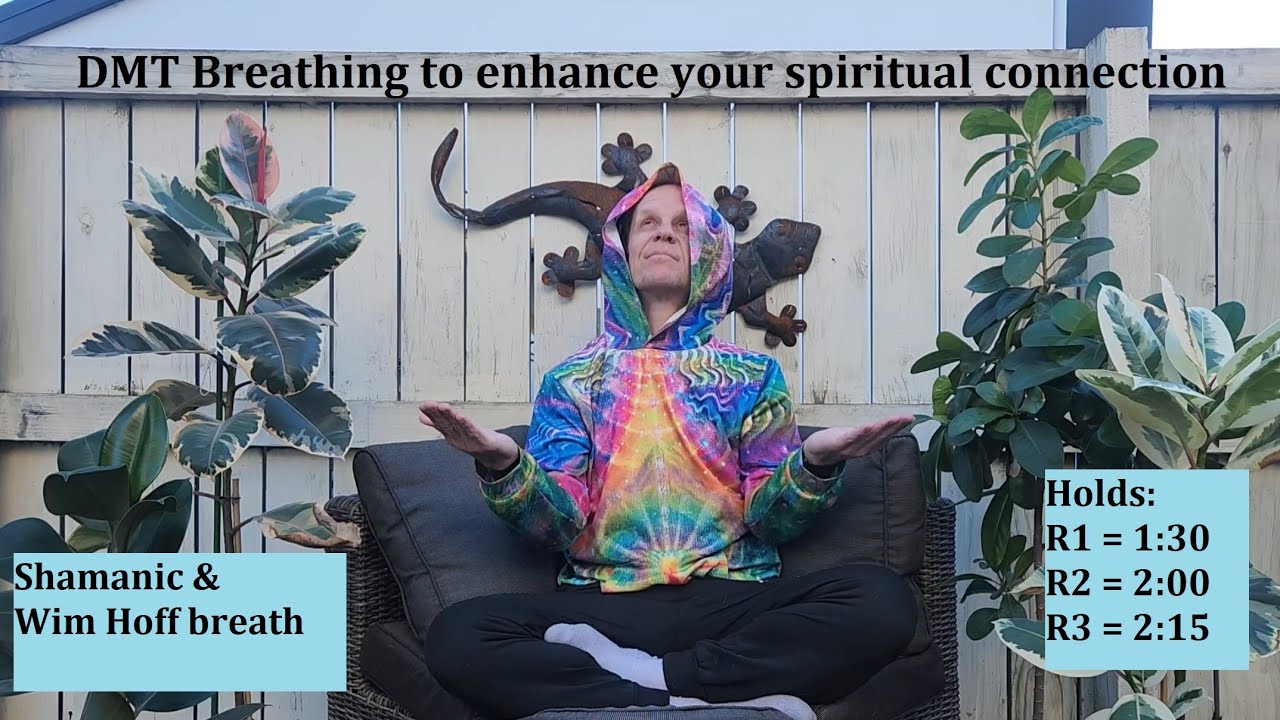
DMT Breathing: Exploring the Science and Mysticism Behind the Practice
DMT, or N,N-Dimethyltryptamine, is a powerful psychedelic compound naturally occurring in many plants and animals, including humans. While often associated with intense, short-lived experiences induced by smoking or injecting the substance, a growing interest surrounds the concept of DMT breathing. This article delves into the science and potential effects of DMT breathing, exploring whether breathwork techniques can indeed trigger endogenous DMT release and what that might mean for practitioners.
What is DMT?
DMT is a tryptamine alkaloid with a structure similar to serotonin and melatonin. It’s known for its potent psychoactive effects, often described as inducing profound altered states of consciousness, vivid hallucinations, and encounters with seemingly autonomous entities. Endogenous DMT, meaning DMT produced within the body, is a subject of ongoing research. The exact role of endogenous DMT is not fully understood, but hypotheses range from involvement in dreaming and near-death experiences to a role in normal brain function. [See also: Exploring Endogenous DMT Production]
The Concept of DMT Breathing
DMT breathing, also sometimes referred to as somatic experiencing breathing or psychedelic breathwork, is a collection of breathing techniques purported to stimulate the release of endogenous DMT. Proponents suggest that specific breathing patterns, often involving hyperventilation followed by breath retention, can alter brain chemistry and potentially lead to experiences similar to those induced by exogenous DMT. It’s crucial to distinguish between the anecdotal claims surrounding DMT breathing and the established scientific understanding of breathwork and its effects on the body. While breathwork has proven benefits, the direct link to DMT release remains largely unsubstantiated.
The Science Behind Breathwork and its Potential Effects
Breathwork, in general, encompasses various techniques that consciously manipulate breathing patterns. These techniques can influence the autonomic nervous system, shifting the body from a sympathetic (fight-or-flight) state to a parasympathetic (rest-and-digest) state. This shift can lead to a cascade of physiological changes, including:
- Reduced heart rate
- Lowered blood pressure
- Decreased cortisol levels (stress hormone)
- Increased feelings of relaxation and well-being
Hyperventilation, a common component of some DMT breathing practices, involves rapid and deep breathing, leading to a decrease in carbon dioxide levels in the blood (hypocapnia). Hypocapnia can cause cerebral vasoconstriction, reducing blood flow to the brain. This, coupled with the altered oxygen levels, can induce altered states of consciousness, lightheadedness, and tingling sensations. [See also: The Physiological Effects of Breath Retention]
Can Breathing Techniques Actually Release DMT?
The central question surrounding DMT breathing is whether these techniques can actually trigger the release of endogenous DMT in sufficient quantities to induce noticeable psychoactive effects. Currently, there is limited scientific evidence to support this claim. While studies have shown that breathwork can influence brain activity and induce altered states, no studies have directly demonstrated a causal link between specific breathing patterns and increased DMT levels in the brain.
Some researchers theorize that the intense experiences reported by practitioners of DMT breathing may be attributed to a combination of factors, including:
- Hypoxia (oxygen deprivation)
- The placebo effect
- The release of other neurotransmitters, such as endorphins
- Altered brainwave patterns associated with meditation and relaxation
- Psychological expectation and suggestibility
It’s important to note that the subjective experiences reported in DMT breathing sessions can vary widely. Some individuals report profound spiritual insights and feelings of interconnectedness, while others experience anxiety, discomfort, or no noticeable effects at all. The lack of controlled studies and standardized protocols makes it difficult to draw definitive conclusions about the efficacy and safety of DMT breathing.
Potential Risks and Considerations
While breathwork, in general, is considered safe for most individuals when practiced under proper guidance, certain DMT breathing techniques, particularly those involving prolonged hyperventilation and breath retention, may pose risks for some individuals. Potential risks include:
- Dizziness and lightheadedness
- Fainting
- Seizures (in individuals with a history of epilepsy)
- Anxiety and panic attacks
- Cardiac arrhythmias (in individuals with pre-existing heart conditions)
- Psychological distress
Individuals with the following conditions should exercise caution or avoid DMT breathing altogether:
- Cardiovascular disease
- Epilepsy
- Severe anxiety or panic disorder
- Pregnancy
- Glaucoma
- Recent surgery
It is crucial to consult with a qualified healthcare professional before engaging in DMT breathing or any other form of intense breathwork, especially if you have any underlying health conditions. Furthermore, it is advisable to practice under the guidance of an experienced and certified breathwork facilitator who can provide proper instruction and ensure your safety.
The Mystical and Spiritual Aspects of DMT Breathing
Beyond the scientific inquiry, DMT breathing often carries significant mystical and spiritual connotations. Many practitioners view it as a tool for self-discovery, spiritual exploration, and accessing altered states of consciousness that can provide insights into the nature of reality. The experiences reported during DMT breathing sessions often mirror those described in shamanic traditions and accounts of near-death experiences, further fueling the interest in its potential for spiritual growth.
However, it’s crucial to approach these practices with a balanced perspective. While DMT breathing may offer valuable personal insights and transformative experiences, it’s not a substitute for traditional therapy or medical treatment. It’s also important to be mindful of the potential for psychological distress and to integrate any insights gained through these practices into your daily life in a healthy and grounded way. The potential of DMT breathing may be linked to the body’s natural ability to heal and regulate itself. [See also: Integrating Breathwork into Daily Life]
Conclusion: A Need for Further Research
DMT breathing remains a fascinating and controversial topic. While anecdotal evidence suggests that specific breathing techniques can induce altered states of consciousness and potentially trigger the release of endogenous DMT, rigorous scientific evidence is still lacking. The experiences reported by practitioners likely involve a complex interplay of physiological, psychological, and spiritual factors.
Further research is needed to investigate the potential mechanisms underlying DMT breathing and to determine its efficacy and safety. Controlled studies that measure DMT levels in the brain during different breathing patterns are essential to validate or refute the claims made by proponents of this practice. In the meantime, individuals interested in exploring DMT breathing should proceed with caution, consult with healthcare professionals, and practice under the guidance of experienced facilitators.
Ultimately, whether DMT breathing can truly unlock the psychedelic potential of endogenous DMT remains an open question. However, the growing interest in this practice highlights the enduring human fascination with altered states of consciousness and the quest for self-discovery.

